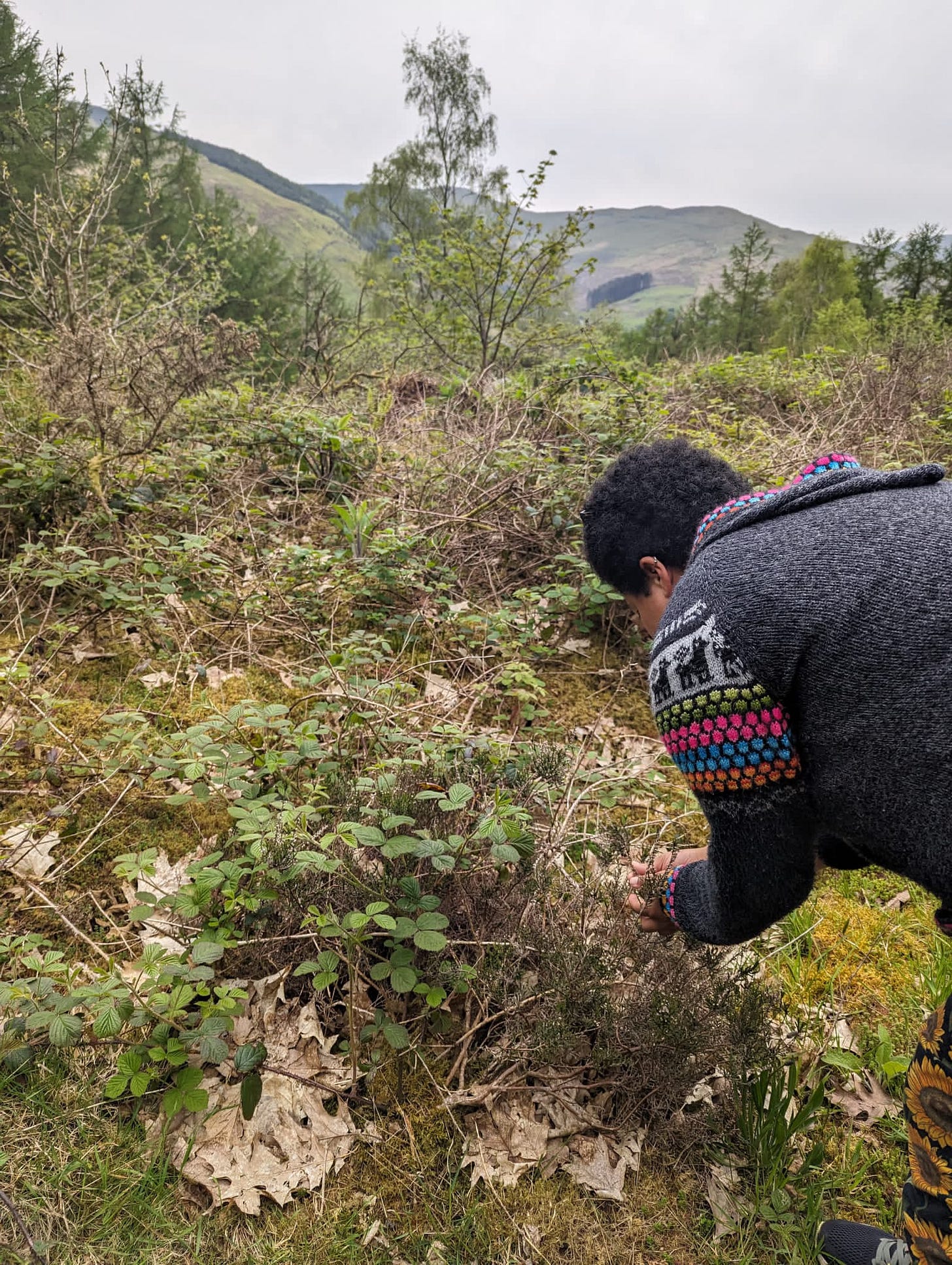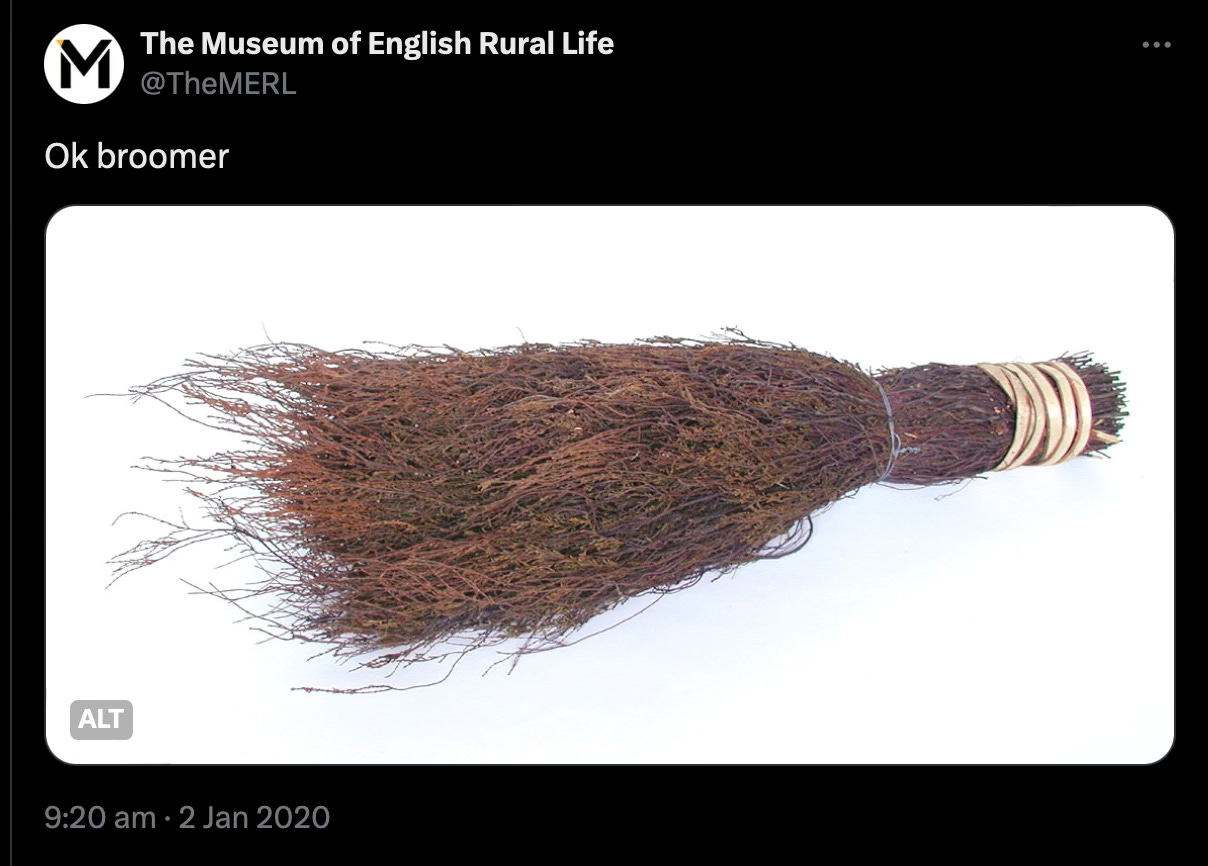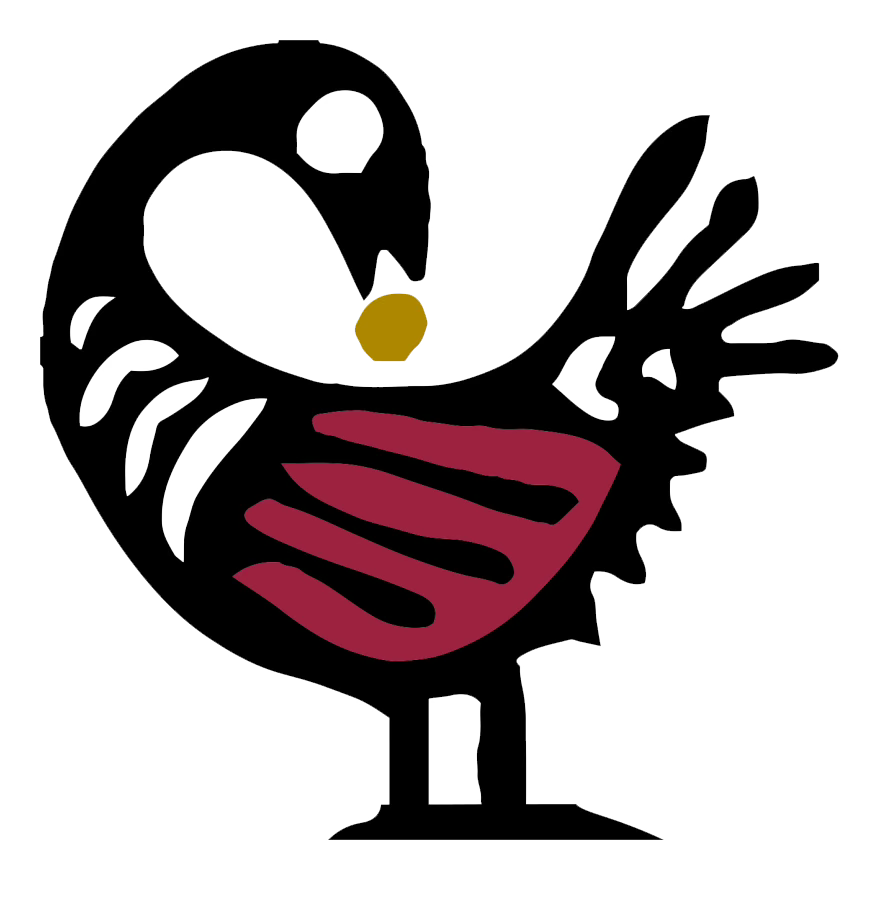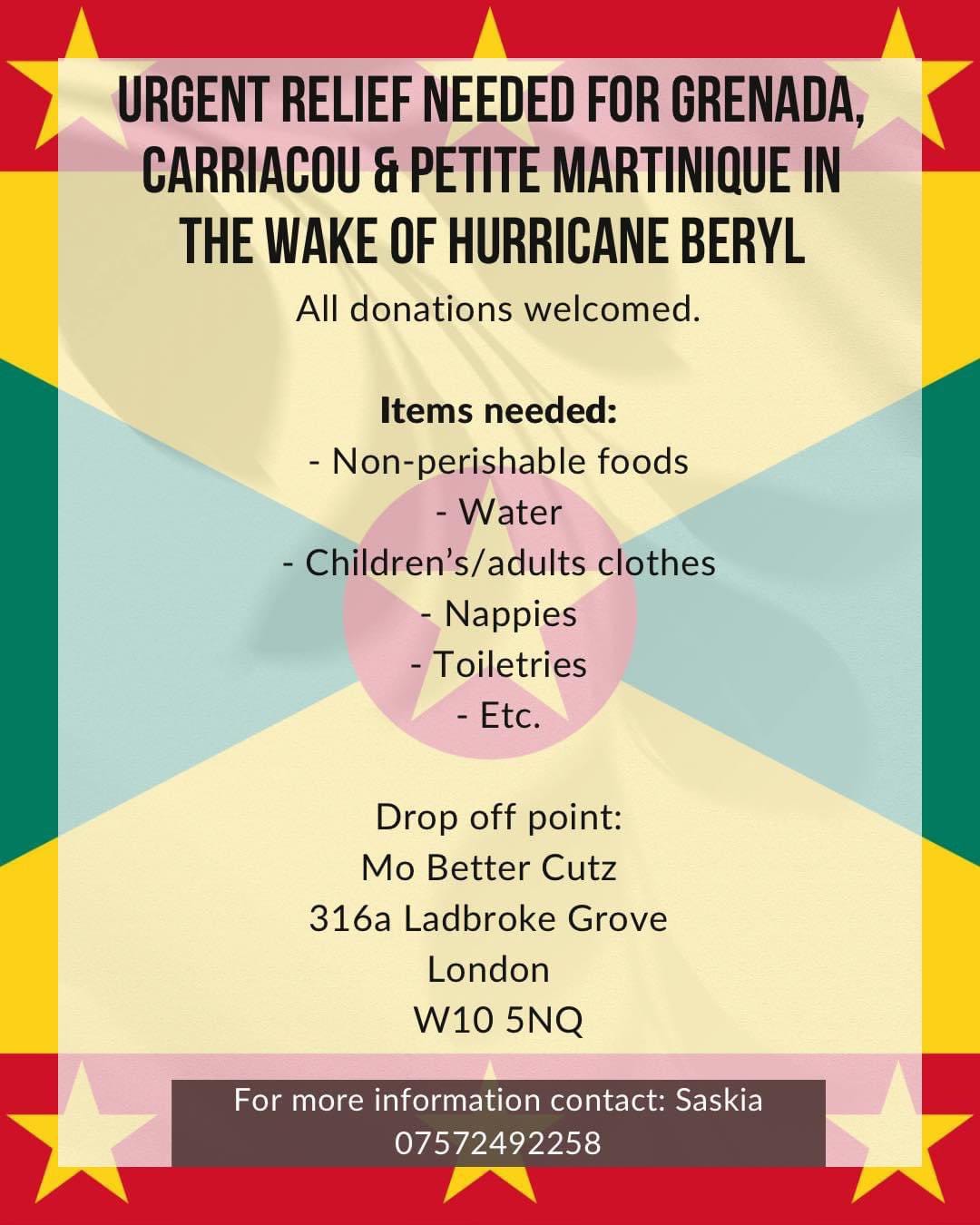This month’s newsletter is a little different, as LION has set the intention to connect to our readers through blog-type posts. We’ll be alternating between our usual newsletter and longer blog posts from a member of the collective or one of our friends!
Josina recently finished a year-long herbalism course where she was invited to make a plant friend to journey with. Building a personal connection to a herb had some surprising lessons in it for her, for land justice and reparations.
Greetings plant lovers.
I welcome the opportunity to share my plancestral learnings about Heather (aka “Ling”, Calluna Vulgaris). Researching the medicinal, edible, folkloric, practical, magical uses of the plant was pretty straightforward.
Its relevance to land justice was a revelation. Heather’s dominating abundance carpets Britain’s moors and heaths, due to widespread forest clearances and an approach to land management which conserves moors for grazing and grouse. In the 19th and early 20th centuries, heathland returned to woodland when grazing rights were abolished. Perhaps one day we’ll see a Britain where heather again exists in forest clearings and under sparse canopies.
Josina communing with heather in Wales.
There were more revelations to come through my plant research. In the deck of cards my herbalist teachers used, the heather herb was associated with the word “oracle”. This was a pretty immense rabbit hole. A quick note that I mean “rabbit hole” in the internet sense where it’s not a burrow with rabbits in it nor a difficult, confusing or nonsensical situation, but an engrossing and wondrous topic I’ve explored.
I was told of Heather’s association with the “crone” or “enchantress” phase of life. Its link to the elder wisdom that comes from a post-menopausal state, “tapping into innate states of being” at the end of the reproductive years. Initially I learned about the Oracles of Delphi. On this mountain there was a faultline where the emission of gases affected their consciousness. If you know anything about body chakras and light colours, it might make sense that the purple-ness of heather links it to the crown and third eye, where wisdom and spiritual connection sit. This created space to think about seership, second sight or psychic ability and their connection to plants. (If I’ve butchered Ancient Greek history here, then apologies but also please don’t email LION with corrections).
I thought more about the crone phase in life. How herbalism connects to this elder wisdom. Heather also had a traditional use by peasants as a broom. A witches’ broom, perhaps? “Kalluno” meaning ‘to sweep’ is the Greek from which Heather’s Latin name Calluna Vulgaris is derived. I thought of a metaphorical sweeping away : ridding me of the mental junk of our teen years and in our twenties. The way that getting older brings with it fewer worries, or for me at least, more discernment about what fears really matter.
Heather is used in kidney tonics. The foliage can be used in urinary infection preparations as an antiseptic, astringent and weak diuretic. I learned that in traditional Chinese medicine, kidneys relate to the emotion of fear, genetic inheritance and ancestral lineage. So these Heather explorations felt like an invitation to connect to my Grenadian heritage, and how a herbalist lineage is relevant to my own life.
In a book on Afro-Caribbean Folk Medicine, I learned that the “Old Lady” is one of three categories of healer, alongside Spiritualist and Voodoo Priest. The Old Lady healer was a “herbalist … able to cure common ailments”. The age and gender descriptors were enough to make a person synonymous with the title of herbalist. This brought to mind other regional names for herbalists, past and present: the curanderas, obeah woman, weedwoman, matronne/accoucheuse (French creole words for midwife).
The book Wild Apothecary highlighted the Jamaica 1898 Obeah Act : “an active yet archaic law which prohibits African people kidnapped to the Caribbean from access to spiritual healing and ancestral power”. I reflected on the persecution of African herbalists in the Caribbean, particularly during enslavement. The British parliament enquiry around slave trade in 1788 had folk tales of obeah practice by a dangerous, old woman character, ‘stories of old, malevolent witches are a familiar trope to a British public’. I thought about herbalists in previous centuries in Britain and Ireland. The same white colonialist patriarchal forces enacted persecution through laws and whipping up fear. To think of this being on both sides of my ancestry, made the reclamation of this knowledge even more important.
I found this passage during my explorations on this Obeah Histories website:
1825 Grenada Consolidated Slave Act (Clause 35 making obeah illegal)
Be it therefore enacted that any person or persons whether free or slaves who shall pretend to use any therefore enacted that any person or persons whether free or slaves who shall pretend to use any art or mystery with the intent or so as to affect the life or health of any Slave or other person or who shall mix or prepare with an intent to give or be cause to be given any poison or poisonous or noxious drug pounded Glass or other deleterious matter in the practice of Obeah or otherwise although death may not ensue on the taking thereof or who shall have in his her or their possession any poisonous drugs pounded glass parrotts beaks Dogs Teeth Alligators teeth or other materials notoriously used in the practice of Obeah or witchcraft and in a state of evident preparation for carrying on such dangerous and nefarious practice or else shall be found at any meeting formed either for the purpose of administering unlawful oaths by drinking human blood mixed with rum Grave dirt or otherwise or for any other unlawful or dangerous purpose whatsoever such person or persons shall upon conviction thereof be deemed Guilty of Felony and shall suffer death transportation or such other punishment as the Court shall think proper to direct.
“The contribution of spiritual healers to sustaining Caribbean cultural life and sometimes in fighting slavery or colonial rule”.
It was sad and enraging to think about the persecution of healers and herbalists detailed in the above passage. It will have certainly severed some of the positive plant relationships for my Grenadian ancestors. Yet it was empowering and expansive to consider the role of botany and plant wisdom in our resistance. Our enduring Caribbean struggle against colonisation, enslavement and genocide is nourished by this plant work, across many fictitious borders. I got to learn more about the herbalist work of Nanny of the Maroons. The resistance through herbal work was represented so well through the queer herbalist character in the Anatomy of a Black Rebellion play, written by long-time friend of LION, Zahrah Delilah.
The endurance of folk medicine and herbs for healing in our communities *is* resistance to enslavement, to oppression and racism. It is nurturing, protection and life-giving. It carries an innate connection to growing; food and medicine are overlapping categories of plants we need relationships with for survival.
"It is not taboo to go back for what you forgot (or left behind)”
The Sankofa concept gets bandied about a lot (and rightfully so). I’d never felt it as much until learning the literal translation of the Akan proverb while creating a presentation on Heather for my herbalist course. Also the word “plantcestral” really appeals to me, and is spoken about beautifully in the context of Palestine and surrounding countries in this book by Layla K. Feghali.
Sankofa.
I am grateful to Heather as a plant teacher and the many eco-spiritualities used to make sense of ancestral veneration, tending to our health and resistance, and looking forward to a shared future. Heather was a particularly insightful plant for thinking about communal living and relationship harmony with bees, land and fungi. It has helped me to think of land as stewarded for the ancestors and generations yet to come. Heather’s connection to seership feels in service of this same vision.
I wrote this blog post before Hurricane Beryl decimated Caribbean islands including Grenada. It’s been heartbreaking, and LION member Dee Woods was reminding us to trust in the energies of Oya: sudden positive change and Aganju: believing that good will come out of the chaos.
Herbalism is one way that I tap into the resilience required for the years to come. Developing our abilities to collectively respond to current and future climate crises will support our resilience. Please donate and share these links.







